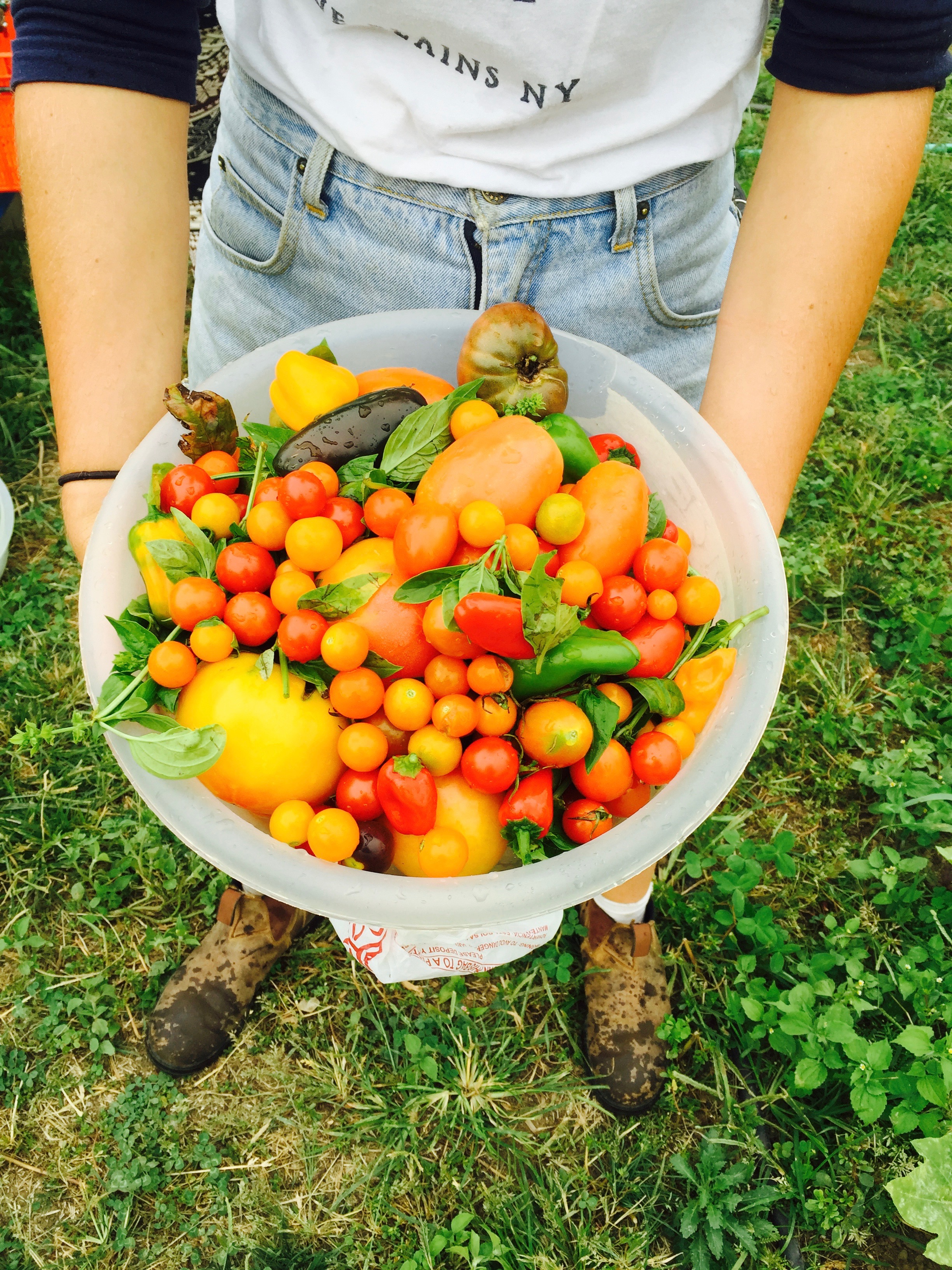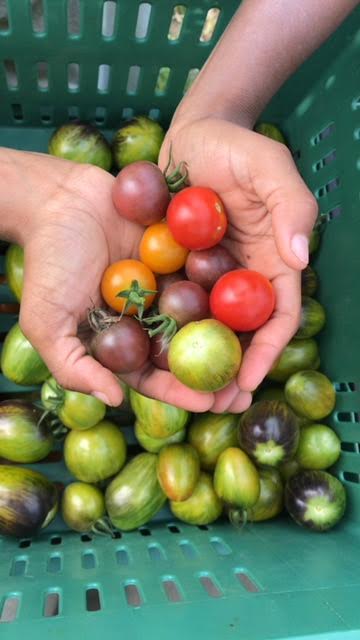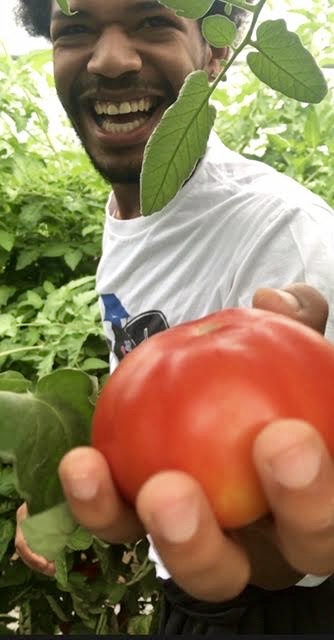September's Harvest of the Month is tomatoes. Harvest of the Month is an initiative of Poughkeepsie Farm Project’s Farm to School program. A different local farm product is served in school meals at area schools each month and we are helping to promote these locally available farm products.
Tomatoes – An Educator’s Favorite “Fruit-Vegetable”
By Chris Gavin, Garden Educator
As summer draws to a close, families around our community are busy preparing for the start of a new school year. For parents and care-givers it means gathering school supplies, for teachers it means readying classrooms and lesson plans, for kids it means getting the most out of the last hot days of vacation. And for me, a farm and garden educator at the PFP, September means TOMATOES! One of the tricky things about doing garden education in schools is that students are on summer break when the growing season is at its peak. BUT when September rolls around and kids are heading back to school, our farm and gardens are still churning out juicy and delicious tomatoes of all shapes, sizes, and colors.
One of our goals as a teaching team is to facilitate joyful and engaging experiences around the eating and growing of healthy foods. And from the perspective of an educator, tomatoes are the perfect crop to introduce at the start of the school year. Tomatoes are accessible – what kid hasn’t at least heard of them?! They are beautiful – tomatoes can be virtually every color of the rainbow. They are great for school gardens – you can grow enough cherry tomatoes to feed a whole class in a small amount of space. They are versatile – you can prepare them in so many ways that every kid is bound to find a recipe that appeals to them. And, of course, tomatoes are abundant at the farm right now, so September is a great time to highlight them in local school cafeterias.
I don’t need to spend time extoling the benefits of farm and garden-based education, I’m sure anyone reading this knows how impactful our work is on the next generation of eaters. And since kids are already familiar with tomatoes they make a great point of entry into the subject of growing and eating healthy foods. Here are a few talking points from a veteran garden educator to spark a kid’s interest (or fun facts to share at your next dinner party as you serve up a dish featuring PFP tomatoes!):
- The domestication of tomatoes can be traced back to 500 BC in Central America. The word tomato comes from the Aztec word tomatl meaning “swelling fruit”. The first tomatoes were small like cherry tomatoes and are thought to have been yellow in color.
- In 1893 the Supreme Court ruled that tomatoes should be categorized as a vegetable and not a fruit because of their use in savory cooking (we eat them for dinner, not dessert!).
- Tomatoes are part of the plant family called nightshades, they are “plant cousins” to potatoes, eggplant, tomatillos, and peppers.
- The leaves and stems of the plant are toxic if eaten in large quantities.
- Tomatoes have many “friends” known as companion plants that help one another grow. You can grow strongly scented plants such as onions, garlic, or mint near your tomatoes to naturally repel pests.
- Tomatoes are high in lycopene, a phytonutrient found in red fruits and vegetables that is thought to have a positive effect on cardiovascular health.
- The tomato horn worm is a bright green caterpillar that can devastate tomato crops by eating the unripe fruit. Some growers use a biological control to limit damage, they release parasitic wasps that lays eggs inside the worm!
- There are approximately 7,500 varieties of tomato worldwide, and the PFP grows dozens right here in Poughkeepsie – including many heirloom tomatoes that have more variation in color, texture, and flavor.
In case you are still doubting the educational power of the humble tomato, here’s an anecdote from a family cooking workshop we offered this year. While brainstorming a list of the 5 food groups, I asked if a tomato was considered a fruit or a vegetable. Kids who appeared unengaged quickly got pulled into a heated debate on the topic. And in case you are pondering this same question, tomatoes are botanically classified as a fruit because they grow from a pollinated flower and have seeds inside (this category refers to the part on a plant). In terms of food groups, they are classified as a vegetable because of how we use them in the kitchen and because of their nutritional content. Here’s a simple kid-friendly answer: if you are a chef you call the tomato a vegetable, if you are a scientist you call it a fruit. And one elementary school group resolved this debate with a compromise, coining a new term that I use all the time in teaching now – tomatoes are a fruit-vegetable! And as an educator, they are one of my favorite fall teaching tools.
I know this may sound over the top, but tomatoes can be like a magical gateway to healthy eating for young people. I can’t count the times I’ve had a student tell me they hate vegetables but will gobble down cherry tomatoes by the handful on a farm visit or in a school garden. And they especially go wild for them if they had a hand in growing, harvesting, or cooking them. So next time you are picking cherry tomatoes for your CSA share or dicing them up for a fresh salsa, invite a young person in your life to join you. You might just convert them to being a vegetable lover!






